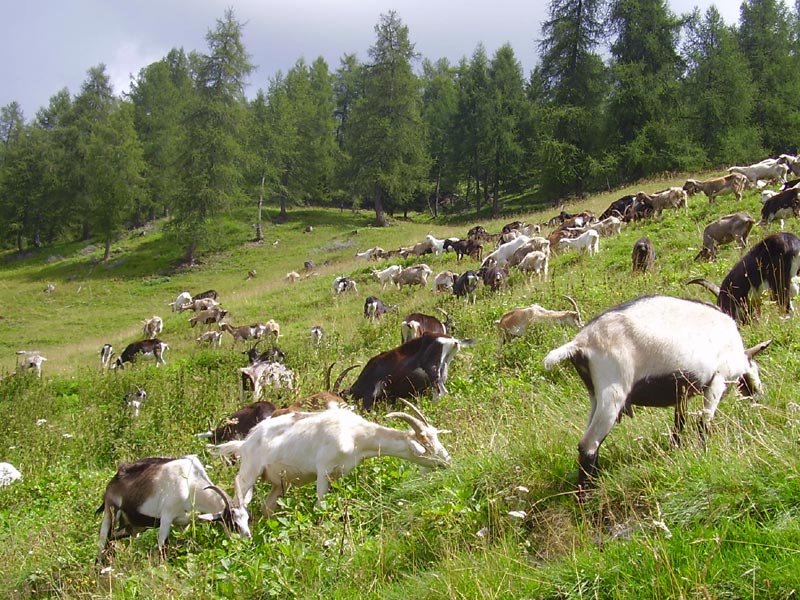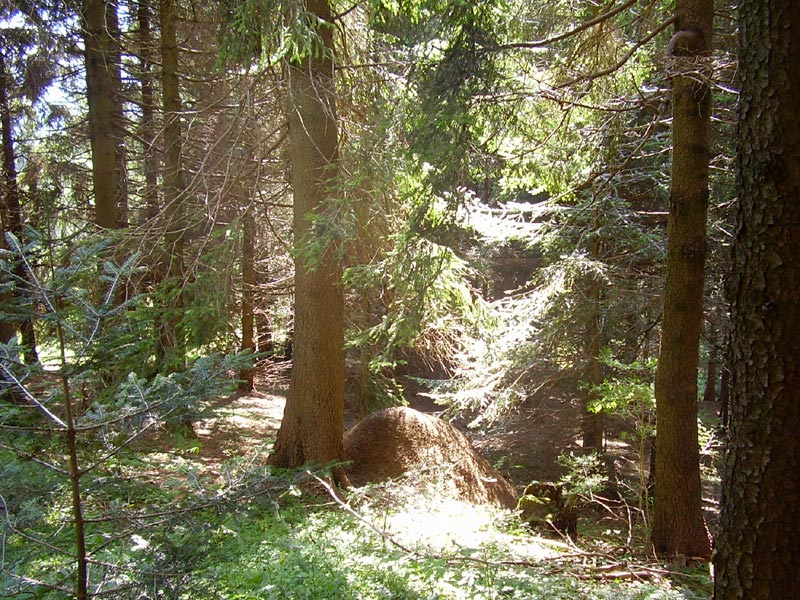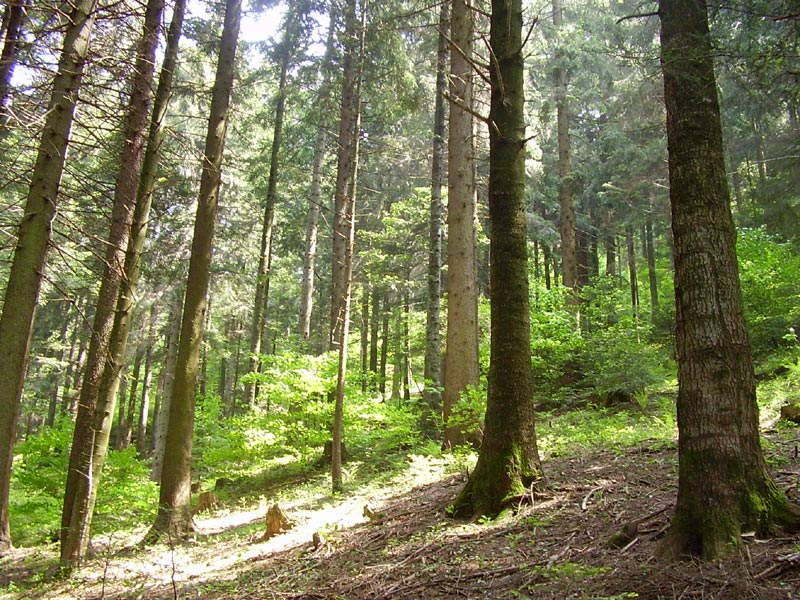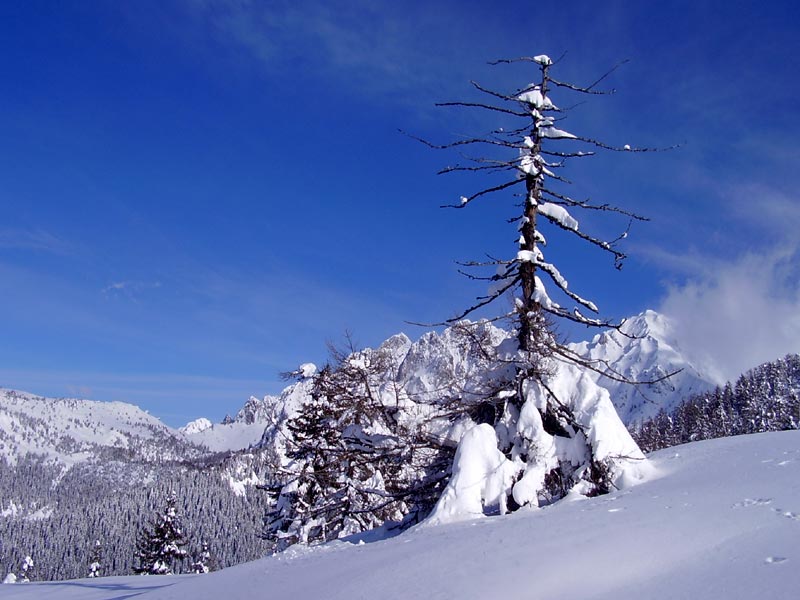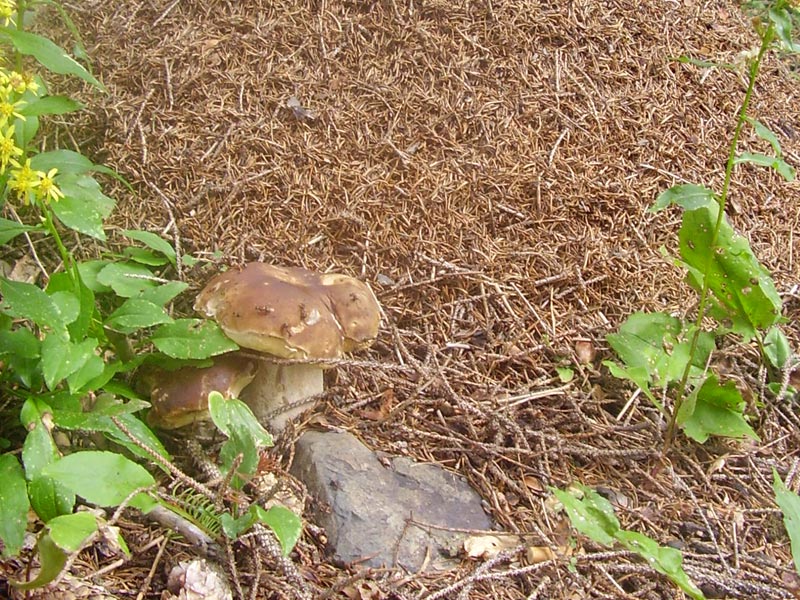Riserva Naturale Boschi del Giovetto di Paline
www.ersaf.lombardia.it/biodiversita-e-aree-protette/riserve-naturali/riserva-naturale-boschi-del-giovetto-di-paline/Protected Area
Identity Card
- Land Surface Area: 675.00 ha
- Regions: Lombardia
- Provinces: Bergamo, Brescia
- Municipalities: Azzone, Borno
- Establishment Measures: DCR 2014 25/03/1985
- PA Official List: EUAP0284
Geology
Rocks and Soil
The geological structure of the Reserve consists of Triassic sedimentary formations mainly dominated by marly-clayey deposits. These rocks can be easily eroded, and they give origin to rounded shapes and gentle slopes, and along short stretches to less degradable calcareous-marly deposits outcropping in the steepest areas. The former, of a blackish brown color, consist of various layers deriving from a thick system of fractures; the second ones, which are greyish, are rather compact and more or less stratified. Towards the lower limits of the Reserve (loc. Paen) - where the gradient is comfortable - the local rocks are covered with a blanket of glacial and river-glacial deposits with pebbles of reddish rocks. Slope deposits, which are particularly extended in the "Paghera" area, on the Valle di Scalve slope - are made up by stabilized detritus formed by tiny chips of argillite, locally called "mortès". Detritus deposits carried by the waters and consisting of rough limestone cobbles and sands are gathered at the mouth of the talweg near Croce di Salven Pass (confluence area of the Oglio glacier with Val di Scalve glacier).
Vegetation
The Vegetation Cover
At first sight the vegetation cover of the Reserve seems to be
characterized by at least three formations: woods, brush-woods, and
grasslands. The area covered with woods strikingly extends on the 82%
of the territory, from 950 m (on Valle di Scalve slope) up to 1.850 m.
They form a relatively compact, homogeneous blanket mainly consisting
of Spruce fir high forests (pagher). However, at a closer look, the
forest vegetation can be divided into three strips. From lower
altitudes to 1.250-1.300 m where there are cool exposures, you can find
mixed woods of Spruce fir and Silver fir. Therefore, the mixed wood is
heterogeneous, since it is formed by groups and by trees of different
age with an undergrowth relatively rich in musks, ferns, and other
herbaceous and shrubby species. Where the soil is less rich in water or
where it is more sunny, the Spruce fir dominates with not very
significant mixed groups of broadleaved trees like beech tree, Common
ash, Sycamore, and Hazelnut tree. From 1250-1300 m to 1450-1550 m,
woods are dominated by Spruce firs with a limited presence of Silver
fir and sometimes larch. The latter, a conifer, which can be easily
identified late in the autumn thanks to the golden yellow color of the
leaves before they fall from the trees, is present in a significant
manner only along a short stretch of the slope of Borno, because of an
artificial introduction. From 1450-1550 m to the limit of the arboreal
vegetation, at about 1750-1850 meters, the wood tends to gradually open
becoming thinner or forming groups alternating with clearings rich in
shrubby undergrowth with Alpine alder, Rowan, rhododendron, and
bilberries, where animal and vegetal life is particularly rich. At
higher altitudes, Spruce firs dominating at lower altitudes give way to
the larch. In the modest strips of larch wood, the undergrowth
vegetation is varied, with abundant herbaceous species characterized by
a rich spring blooming. The larch can colonize soils temporarily
lacking in wood and abandoned grazing-lands, enabling Spruce firs to
grow under its protection. Shrubs characterizes above all the steepest
mountain slopes in the Val Giogna and a fairly large strip on the
northern side, where the snow melts later.
Besides the Alpine
alder, which together with the rhododendrons forms thick brushes in
areas at the edges of the grazing-lands, along the talweg there are the
Alpine Laburnbum and willows.
The grasslands, including meadow-pastures, grazing-lands, and secondary
uncultivated grasslands, originated from the artificial cutting of the
wood in order to increase the available grazing area. The
meadow-pastures include small areas towards the lower limits of the
protected area; the pastures are linked to the seasonal settlements of
malga Creisa and Paiano, in the Municipality of Borno and of malga
Costone mainly on the Valle di Scalve slope, which are still
respectively used for cattle and sheep grazing. The secondary
uncultivated prairies cover the steepest areas towards the "Cerovine"
spring.
The Management of the Woodlands
The fact that the woods of the Reserve belong to Municipalities
situated in two Provinces with completely different traditions and
economy, the different exposure of the slopes and the consequent
climatic differences led in the past to the different management of the
forest heritage.
In particular, on the Borno slope, the Spruce fir
wood treated at clear cutting has been favored in order to periodically
obtain great quantities of timber, with great harm to the forest
covering continuity; on the contrary, on the Valle di Scalve slope,
also thanks to favorable environmental conditions, the wood has always
consisted of mixed Spruce fir and Silver fir, and the cutting treatment
could be chosen among rather low cutting diameters.
The forest management plans in force forbid clear cuttings and apply
the criteria of naturalistic sylviculture aimed at remaking the woods
as more mixed as possible with the various ecologically adequate
species, with a biomass in balance with the soil fertility, and able to
be perpetuated in a natural manner, leaving to the man the monitoring
and safeguard interventions and the selective use of the ripe plants.
These criteria, beside not being harmful for the wild fauna, seem to be adequate also as far as the presence of Formica lugubris is concerned, whose colonies are particularly widespread and vital in the most natural woods.
Ants
A Personality in the Reserve
Ants are among the oldest creatures on the planet. They look almost the
same as they did 100 million years ago. At first sight they are all
similar, but according to myrmecologists - the experts studying these
funny insects - the ant species we know are about 12,000. In Italy more
than 200 ant species are known: among them, in the conifer woods of the
Alps, there are ants building the most showy anthills. These species
belong to the Red ant group, also including the Formica lugubris which mainly lives in the woods of the Riserva del Giovetto, where it is safeguarded. Like other social insects families (bees,
wasps, and white ants), also red ants have a well-defined
characteristic rank system.
The population of red ants is formed by
queens, workers and males. Workers are sterile females (5-7mm), their
body is almost slender, they have a rusty colored back, blackish head
and abdomen. They are the largest part of the nest population. They can
do everything, defend their nest, take care of the offspring, and look
for food. They can live from 4 to 5 years.
Males are smaller than females and have wings. Only winged ants -
queens and males - swarm in the first days of the summer when males
take part to the queens' wedding flight and fertilize their eggs. Their
life is very short (3-4 weeks) and they die within some days from the
wedding flight.
Queens are fertile females which are slightly larger (8-10 millimeters)
and have wings. If queens are not eaten up by predators (birds or
insects) their wings drop after the wedding flight and their long
existence begins (even 20-25 years). They are devoted to lay eggs in
the deepest part of the nest. Fertile queens look for an accommodation
either in the original nest or in one of the same species. Sometimes
they can establish a new ant-nest laying eggs and breeding the first
offspring alone: from larvae to workers.
Anthills
All the species of Formica rufa group build dome-shaped nests: the ideal shape to capture the sun heat and protect it from rainfalls.
The diameter of anthills reaches 1.20 meters and they are almost 60cm
high. They can contain a population ranging from 200,000 to 500,000
ants, some hundred of which are queens. They can even reach 2 meters of
diameter and can be crowded by a population of more than a million
ants. The depth of anthills is equivalent to the height of their dome.
They usually include a rotting stump or a large dead root. In the
underground section, ants are sufficiently protected and the
temperature is ideal. Communicating rooms built in succession are
destined to the queen or to the growth of eggs and to contain masses of
winged ants, in the period close to the time when they swarm. The
various materials with which the nest is built - such as conifer
needles, branchlets, soil particles, drops of resin, etc. are
skillfully interlaced and form an amazing architectural building which
is compact enough. In the summer, the temperature inside the anthill is
constantly around 24-28°C, but in the deepest part of it, it does not
fall below 20°C. From the end of September, ants start concentrating
in the depths of the nest where they spend the winter almost motionless
at a temperature of about 10°C. In the good season, inside the nest,
groups of workers serve their queen, take care of the offspring, clean
up cells and galleries. If the temperature is too high, they make new
openings to allow a better ventilation. The nest is constantly
inspected to maintain the building and to control the regular
replacement of building materials. During the period of activity, many
workers mount the guard and inform their mates as soon as the nest is
endangered.



